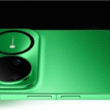Rising HDD Prices: A Market Analysis and The Surprising Cost-Effectiveness of Synology Drives
Summary
- The HDD market is experiencing significant shortages and price increases, with hikes of 15% to 20% since September.
- Major manufacturers such as Western Digital, Seagate, and Toshiba have raised prices due to high demand from AI and cloud service sectors.
- Interestingly, Synology HDDs have not followed this trend, offering competitive pricing that appeals to a broader consumer base, including QNAP users.
In recent weeks, the Hard Disk Drive (HDD) market has witnessed extraordinary fluctuations in pricing and availability. Since September, HDD prices have surged by nearly 15% to 20%, creating a landscape of scarcity and consumer concern. This shift has been predominantly driven by a remarkable spike in demand from artificial intelligence (AI) and cloud service providers, creating unprecedented competition for available inventory.
Market Dynamics
The wave of price increases began on September 12, when Western Digital announced to its clients an unavoidable need to elevate HDD prices. The company reported that demand across various capacities skyrocketed, forcing delays in shipments that reached up to 10 weeks. Following Western Digital’s lead, industry giants Seagate and Toshiba have also increased their pricing strategies, gradually adjusting their HDD product costs in response to the market’s growing demands.
The Synology Surprise
Amidst this upheaval, an intriguing trend has emerged: Synology HDDs, traditionally priced higher than those from market leaders, have notably resisted this price increase. For instance, the Synology Plus 16TB HDD is currently more affordable than Western Digital’s WD Red 16TB HDD, despite both being premium products.
Changing Consumer Behavior
This unexpected pricing strategy by Synology is reshaping consumer behavior. Previously, the main buyers of Synology HDDs were users of Synology’s NAS systems, primarily due to support policies that limited customers’ choices. However, the recent competitive pricing has expanded the appeal of Synology drives. Retailers have noted a significant uptick in purchases from customers who own QNAP NAS systems, suggesting that the lower prices have made Synology products a viable option beyond their original target audience.
Implications for Retailers and Consumers
As retailers adjust to these market changes, the implications for consumers are profound. The surge in Seekers for HDDs creates not only challenges but also opportunities. Consumers now have a broader selection of products and the chance to capitalize on better pricing, especially with Synology’s competitive offerings.
Conclusion
The HDD market is currently caught in a complex web of rising prices and changing consumer preferences. While the primary manufacturers adjust their pricing strategies, Synology’s unique market position offers consumers a cost-effective alternative. This dynamic shift underscores the importance of remaining informed about market trends and encourages consumers to explore all available options.
In summary, while the HDD market grapples with significant challenges, Synology’s competitive pricing strategy could reshape consumer choices and redefine the value proposition in this increasingly intense landscape. As demand continues to surge, both consumers and retailers will need to adapt quickly to capitalize on the evolving market dynamics.





